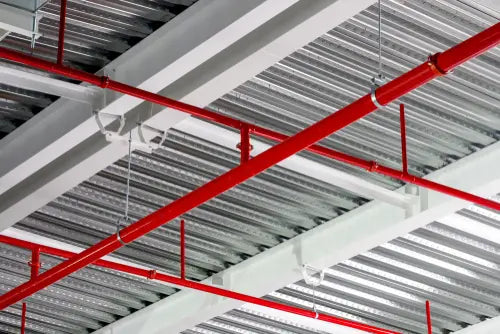Proper installation of pipe supports is essential to maintaining structural integrity, system efficiency, and safety across a wide range of piping applications. When done right, it helps prevent costly repairs, premature wear, and system failure. In this article, we’ll walk through common mistakes to avoid and offer a practical step-by-step guide to selecting and installing the right pipe supports for your next project.
What Are Pipe Supports and Why Are They Important?
Pipe supports are structural elements designed to carry the weight of a pipe and its contents. They prevent sagging, reduce vibration, and accommodate thermal expansion or contraction. A poorly installed or mismatched support can damage the piping system or connected equipment.
Types of Pipe Supports
There are various types of pipe supports used across industries, including:
-
Hangers: Suspend pipes from ceilings or overhead structures.
-
Saddles: Provide bottom support and are ideal for horizontal pipelines.
-
Rollers: Allow for axial movement and are used in systems with thermal expansion.
-
Adjustable stanchions: Offer vertical flexibility and are ideal for precise height control.
Adjustable pipe support stanchions, like those available here, are ideal for systems that require flexibility and vertical height adjustment.
Common Materials Used
Pipe supports are commonly made from:
-
Carbon steel for strength in general applications.
-
Stainless steel for corrosion resistance in harsh environments.
-
Galvanized steel for durability in outdoor use.
Choosing the right material ensures long-term performance and compliance with environmental conditions.
Top Installation Mistakes to Avoid
Even high-quality pipe supports can fail if they’re not installed correctly. Avoid these common errors:
Improper Spacing or Placement
Incorrect spacing causes pipes to sag or overstrain support points. Follow manufacturer spacing recommendations, which typically vary by pipe diameter, material, and weight.
Using the Wrong Type of Support
Every piping system has unique movement, load, and environmental requirements. Using the wrong type of support — especially when height adjustability is needed — can lead to long-term issues. That’s where adjustable pipe supports come in.
Ignoring Load and Movement Requirements
Ignoring axial movement, vibration, or thermal expansion can result in cracked supports or pipe damage. Always account for these variables when selecting and installing supports.
Step-by-Step Guide to Installing Pipe Supports Correctly
Getting the installation process right is key to system longevity and performance.
Assessing System Requirements
Start by reviewing pipe size, weight, temperature, and expected movement. Consider fluid type and whether the pipe runs indoors, outdoors, or underground. This determines your support material and type.
Choosing the Right Pipe Support
Match your system’s needs with the right support style. Adjustable stanchions, for instance, provide vertical flexibility — perfect for uneven flooring or systems requiring precise height adjustments.
Mounting and Securing Techniques
Always install supports on structurally sound surfaces. Use the correct fasteners and ensure level alignment. For adjustable models, set the required height before tightening the lock nuts or securing the base.
How to Select the Right Pipe Support for Your Project
Fixed vs. Adjustable
Fixed supports are ideal for static pipelines, while adjustable supports are better for systems with variable height needs or future modifications.
Environmental and Load Considerations
Outdoor or corrosive environments require weather-resistant materials like stainless or galvanized steel. For heavy-duty applications, select supports rated for higher load capacities.
Compliance with Industry Standards
Ensure your selections comply with ASTM, ASME, or local building codes. Certified supports reduce liability and ensure safety under load and thermal conditions.
Explore our adjustable stanchions to find a support that matches your exact load and movement requirements.
Maintenance Tips to Extend the Life of Your Pipe Support System
-
Inspect supports periodically for signs of corrosion, fatigue, or loosening.
-
Re-tighten bolts and adjust for any pipe movement.
-
Replace damaged or worn components promptly.
-
Keep adjustable mechanisms clean and free from debris.
Lubricate moving parts if required by manufacturer instructions.
FAQs About Pipe Supports
How far apart should pipe supports be placed?
Spacing depends on pipe size, material, and content. For steel pipes, supports are typically spaced every 8 to 10 feet. Always follow the manufacturer’s guidelines or engineering specifications.
Can pipe supports prevent vibration and noise?
Yes. Some supports are designed with vibration-isolating materials or damping mechanisms to reduce operational noise and protect structural components from damage.
What kind of support is best for outdoor use?
Outdoor environments demand corrosion-resistant supports. Stainless steel or galvanized adjustable supports are excellent choices for weather exposure and long-term durability.
Need Help Choosing the Right Pipe Support?
Check out our adjustable pipe support stanchions at PipingNow — built for durability, stability, and ease of installation. Whether you’re outfitting a commercial system or upgrading existing infrastructure, PipingNow has the reliable support solutions you need to get it right. Contact Us Now!

